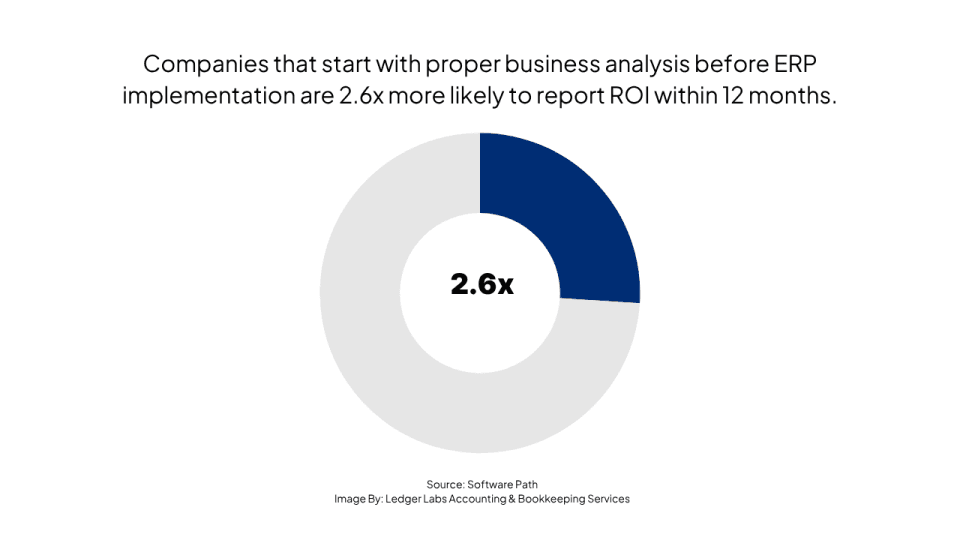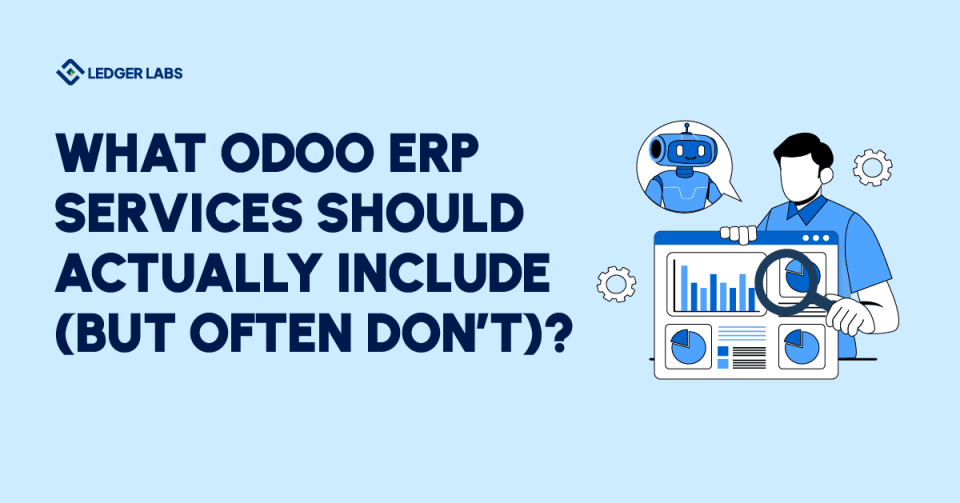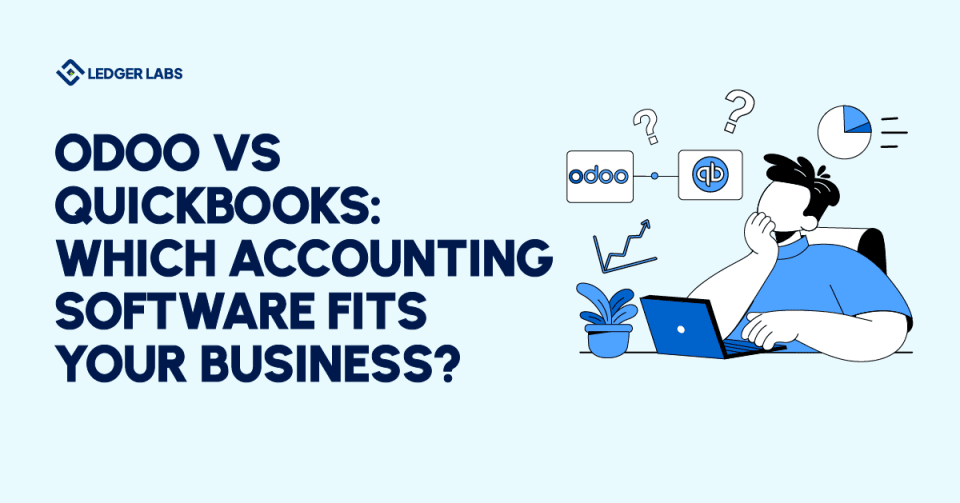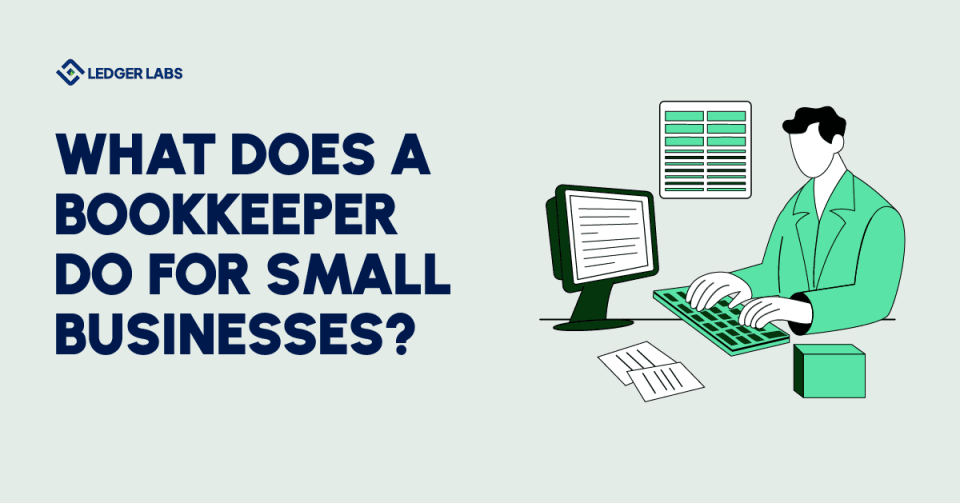Most businesses think they’re buying a full solution when they sign up for Odoo ERP services.
But most times, they aren’t.
They’re buying a partial implementation, packaged to look complete.
What’s sold as “end-to-end” often stops at installation and configuration. No business analysis. No operational alignment. No ownership of results.
This post breaks down what Odoo ERP services should actually include, but usually don’t.
- Most ERP failures begin with poor process mapping. Without understanding your workflows, providers deliver generic systems that appear functional but don’t match how your business operates day to day.
- If your provider doesn’t tailor automation, approvals, and edge-case logic, your team will avoid the system or invent messy workarounds that undermine accuracy.
- Without role-specific guidance and usable documentation, your team won’t fully adopt the system, no matter how well it’s built.
- Incomplete implementations seem functional until reports break, inventory mismatches, or processes collapse under pressure.
- Proper ERP services prevent silent failures by ensuring all operational scenarios are accounted for from the start.
The Problem Isn’t the Software. It’s the Service.
Let’s be clear: Odoo isn’t the issue.
It’s one of the most flexible ERP systems on the market. You can use it to manage inventory, finance, HR, CRM, subscriptions, helpdesk, and more.
But flexibility is a double-edged sword.
It only works when the system is shaped precisely to fit how your business runs. And most service providers either lack the operational context or skip the hard parts.
What you’re left with is a system that’s technically implemented but strategically useless.
Your modules are installed. Workflows mostly work. But the reporting is off, automations break under edge cases, and your team finds workarounds to avoid dealing with the system at all.
It’s not broken. It’s just not right.
And fixing “not right” is harder, because on paper, nothing is wrong.
Recommended: 6 Odoo Bookkeeping Automations You’re Not Using (But Should Be)
A. What a Proper Odoo ERP Service Should Actually Include?
If you’re paying for Odoo services, here’s what should be included (not as add-ons, but as the baseline):
1. Business Process Mapping
According to a 2024 Software Path study, companies that start with proper business analysis before ERP implementation are 2.6x more likely to report ROI within 12 months.

Before a single module is touched, your provider should understand your operations deeply.
Not just what software you use now, but how orders flow, how decisions are made, where bottlenecks exist, and what needs to improve.
They should be asking:
- How do you handle procurement?
- Who approves sales discounts?
- What are your current reporting blind spots?
- How do your teams actually use internal tools?
If your implementation partner isn’t doing this, they’re not building a system for your business. They’re reselling templates.
2. Custom Workflow Design
Odoo isn’t plug-and-play.
Every business has nuances, including approval rules, field logic, automated alerts, and document flows. If your ERP partner isn’t helping you design the workflows, they’re just dragging and dropping menus.
Most “complete” implementations don’t touch automation, approval hierarchies, or exception logic.
They leave the system static. Then your team builds spreadsheets to manage the rest.
Proper service includes:
- Mapping what happens when things don’t go as planned (e.g., partial delivery, failed payment, canceled order)
- Automating internal communications when a threshold is hit
- Creating alternate paths for high-touch or VIP accounts
These are not bonus features.
They’re what makes the system worth using.
Also Read: Top 7 Challenges in Odoo ERP Migration (And How to Overcome Them)
B. What Most Agencies Deliver Instead?
Here’s what the majority of Odoo “service providers” actually do:
- Install the software
- Set up basic modules (Sales, Inventory, Invoicing, etc.)
- Do minor branding customizations
- Maybe configure a few reports
- Leave you with documentation or handover
It’s a boxed implementation. And boxed implementation assumes:
- All businesses operate the same way
- You’ll figure out the rest
This approach might get you a functioning system, but not a trusted one.
Not a system your sales team swears by. Not one your finance head uses for real-time decisions. Just one more tool your staff tolerates.
C. The Hidden Cost of Incomplete Services
When your implementation partner leaves gaps, you pay for it twice. First in rework, then in confusion.
Let’s say your inventory app is set up, but no stock valuation method was chosen properly. You end up with fluctuating costs on reports and your balance sheet doesn’t match. You either have to pay another firm to fix it or spend months retraining your team and re-entering corrected values.
Or your team skips the helpdesk module because it wasn’t configured to match your support flow. So they use Gmail. And customer complaints fall through the cracks.
Your team stops trusting the system.
And once that trust is broken, it’s almost impossible to rebuild.
D. Case in Point: A Broken “Complete” Setup
We worked with a retail brand that had hired a regional agency to implement Odoo. On the surface, everything was in place: Sales, Inventory, CRM, Invoicing. The project was labeled “done.”
Except:
- Discount approvals weren’t automated
- Warehouse staff had no barcode scanning support
- The sales team had to generate quotations outside Odoo manually
- Managers didn’t get alerts for delayed deliveries
- No connection to third-party logistics for tracking
None of these things were mentioned in the initial scope because the agency never asked how their business operated.
The result?
A six-month project that delivered half of what the client needed.
We had to rebuild from scratch. Not just technically, but in how the teams thought about using the ERP in their daily workflows.
Odoo support is usually positioned as a post-launch helpdesk. Something goes wrong and you log a ticket.
But real support starts before launch. It means:
- Testing real-world scenarios with test data
- Training your internal team in how things actually break
- Setting up alerts for system errors or failed automations
- Monitoring integrations that might silently fail
The best ERP services proactively monitor the health of your workflows, so issues don’t become fire drills.
E. The Reporting Trap
One of the biggest promises of ERP systems is better decision-making. Clean dashboards. Accurate reports. Real-time visibility.
But what most Odoo service providers forget is this:
Reports are only as good as the workflows underneath them.
If your sales pipeline is filled with stale opportunities because the CRM process wasn’t built with real sales behavior in mind, the forecast report is fiction.
If purchase orders don’t require proper confirmation before moving to the next stage, your inventory report is noise.
If financial reports don’t account for partial payments, discounts, returns, and taxes correctly, you’re not running accounting, you’re running a guessing game.
Proper ERP services should start at the reporting level and reverse-engineer the workflows needed to produce accurate numbers.
F. Training Isn’t a Bonus. It’s the Breakpoint.
You can build the perfect system, but if your team doesn’t know how to use it, you may as well have not built it at all.
Training is usually treated as an afterthought. A recorded Zoom call. A basic PDF. Maybe a few hours of walkthroughs. That’s not enough.
Proper Odoo ERP services should include structured, role-based training. Your warehouse staff doesn’t need the same dashboard your sales team does. Your accounting head doesn’t care about CRM lead stages. And your customer support lead doesn’t need to see every backend trigger.
Each role should have:
- Clear workflows in Odoo
- SOPs written in plain English
- Examples of edge cases they’ll actually encounter
- A go-to person they can ping with questions in the first 30 days
For field-based teams, managing job assignments, progress updates, and document capture onsite, dedicated field service software can ensure those SOPs are followed reliably—and data is available in real time, not buried in PDFs. Without this, adoption stalls. Teams revert to manual processes. Your shiny new ERP system becomes a backup plan they ignore until they’re forced to log in.
We’ve seen companies spend tens of thousands on setup, only to have employees stick to spreadsheets because “the system’s too complicated.” That’s not a system issue — that’s a service failure.
G. Documentation That Actually Helps
If the only documentation your provider leaves you with is a one-pager titled “How to Add a Product,” you’re in trouble.
Documentation is your internal safety net. Without it, every turnover, every process tweak, and every future decision becomes riskier.
Good Odoo ERP services include:
- Flow diagrams of each key process
- Custom module behavior and field logic
- Automation rules and triggers
- Permission structures and user roles
- Backup and rollback instructions
Documentation should be usable by your team. Not a developer-only reference file buried in GitHub. Think Google Docs, Notion, or a simple internal wiki.
H. Change Management: The Missing Ingredient
Implementing Odoo isn’t just a technical project. It’s an organizational change.
You’re asking people to give up familiar tools and processes. You’re replacing Excel with structured databases. You’re shifting control from individuals to systems. That comes with resistance, sometimes silent, sometimes active.
The best Odoo partners understand this. They don’t just build. They lead.
That means:
- Communicating the “why” behind the system
- Involving department heads in workflow decisions
- Rolling out features in stages, not all at once
- Offering short-term manual workarounds while new processes settle
- Listening to user frustration, and refining based on real feedback
If your service provider isn’t helping manage change, they’re not finishing the job. They’re dropping a tool into a moving machine and hoping it works.
ERP is 60% technology and 40% psychology. Ignore that, and your rollout won’t stick.
How to Evaluate Odoo ERP Providers (Before You Sign Anything)
Here’s the uncomfortable truth: most agencies don’t lie about what they offer; they just omit what they don’t.
So it’s your job to ask the right questions upfront. Here are five that will expose whether they truly understand ERP, or just know how to install modules.
How do you handle process mapping before implementation?
If they say, “We’ll figure it out as we go,” walk away.
What’s your plan for user training and post-launch support?
Vague answers mean they’re not planning to be around long.
Can you show me documentation samples from past projects?
If they can’t, they likely didn’t create any.
How do you ensure the system reflects real operational workflows?
If they primarily discuss modules and not people, that’s a red flag.
Who owns what once the system goes live?
You want clarity on handover, responsibilities, and future changes.
Don’t just look at the proposal. Listen for confidence in operational understanding.
You want a partner who talks like they’ve sat in your meetings, not just someone who’s installed Odoo a dozen times.
Also Read: Hiring an Odoo Expert? Ask These 6 Questions First
Conclusion
Odoo ERP has the potential to bring structure, visibility, and momentum to your operations — but only if it’s implemented with depth.
Most ERP services promise the platform. Few deliver the transformation.
The difference isn’t in the software. It’s in the questions they ask, the training they deliver, the documentation they leave behind, and the ownership they take when things go wrong.
If your service provider isn’t aligning your system with your actual business, they’re just giving you new software to struggle with.
Don’t settle for a boxed implementation. You’re building the infrastructure your business will run on for years. Demand more.
And if you want an Odoo professional to do this for your business, we at Ledger Labs are the right team to do it.
We’ve been working with clients from all over the US on making their Odoo (or other ERP tools) more efficient and personalized for their business, and we recommend booking a call with us.













